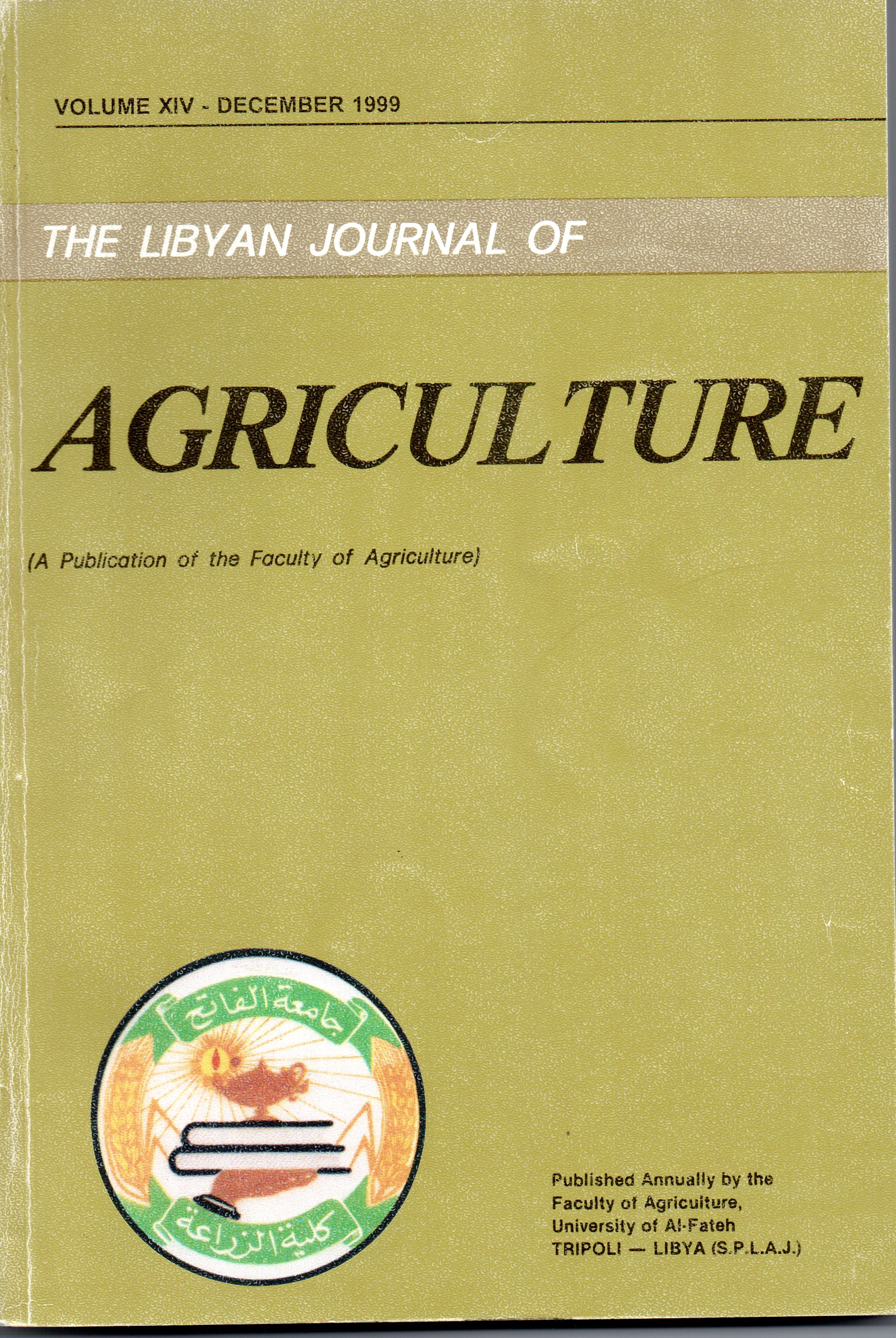Influence of Single and Double Sprays of Some Growth Regulators on Bud Bursts of “Starkrimson” Apple Trees Grown in Al-Marj, Eastern Libya
Main Article Content
Abstract
Similar and evenly aged “Starkrimson” apple trees grown in an orchard at Al-Marj, Eastern Libya; were sprayed once in March 1987, or twice in March 1987 and 1988, with single or double application of some growth regulators. Single sprays consisted of the following treatments: sandolin A (4%), thiourea (2%), and GA3 (500 ppm). Double spray treatments included the application of sandolin A (4%), followed by that of thiourea (2%), GA3 (500 ppm), KNO3 (7%), or ethylenechlorohydrine (50 ppm) 7 days later. In addition there was a control treatment consisting of distilled H2O.
The proportion of bursted buds out of the total initial that were previously counted and tagged, was significantly (P<0.05) higher under two-year sprays than under single year chemical application, whether measurements were taken 2 or 4 weeks after first bud breaks were noticed, except for trees sprayed with gibberellin. Moreover, trees sprayed with sandolin A, singly or after the application of any of the other studied chemicals, showed a higher proportion of bud breaks unless thiourea was present in the double spray. Thus, thiourea and gibberellic acid were found to be less effective and slower acting than sandolin A. Furthermore, their application in a single year hindered the tree bud breaks, during the earlier part of the following season of bud growth initiation. However, this negative residual effect did not last throughout the entire season, indicating that it could have been lifted by some other natural factors such as chilling. Single sandolin A application was recommended for “Starkrimson” apple growers in Eastern Libya, because of its demonstrated superiority in breaking bud dormancy.

